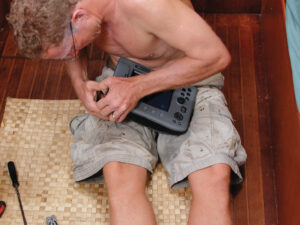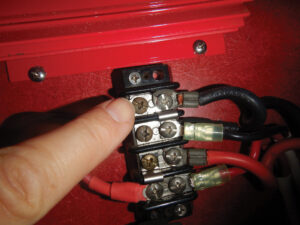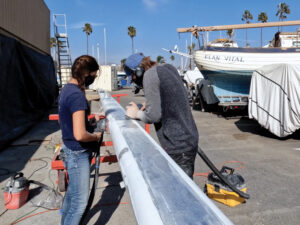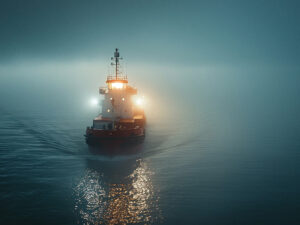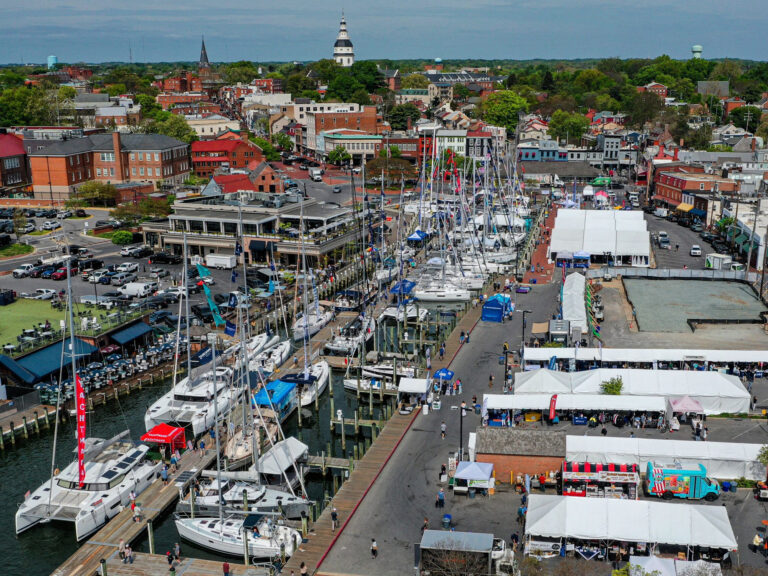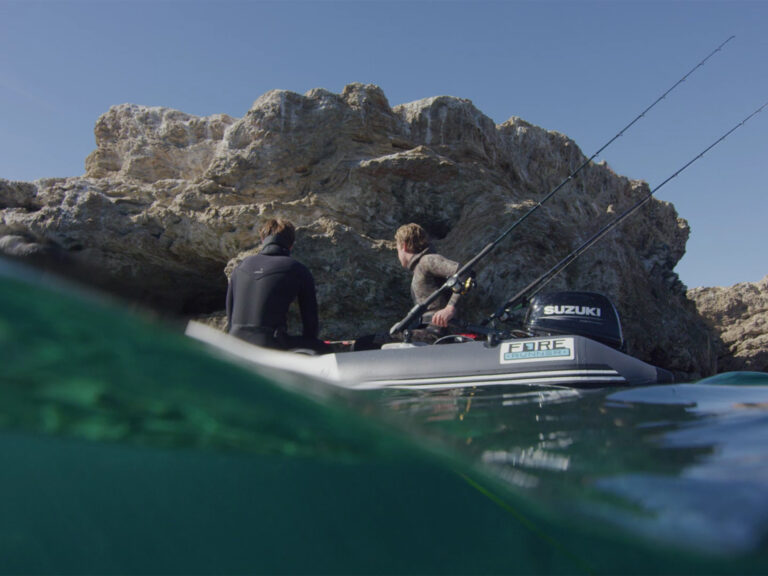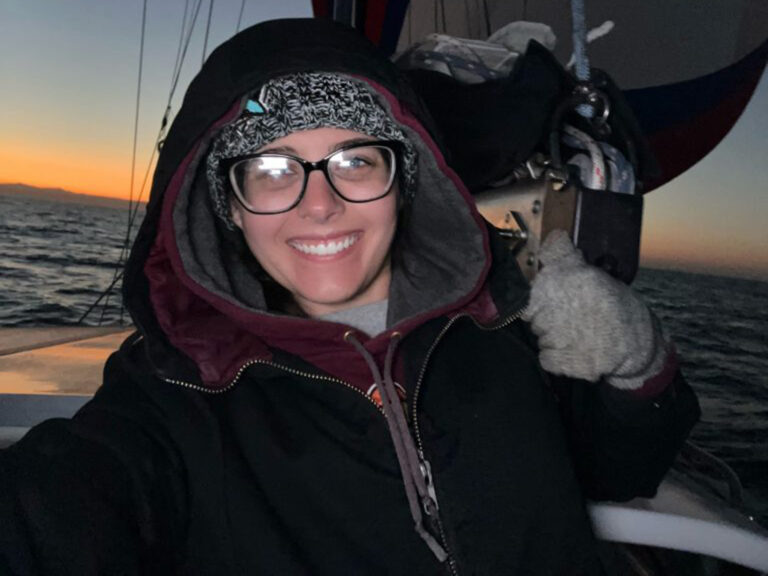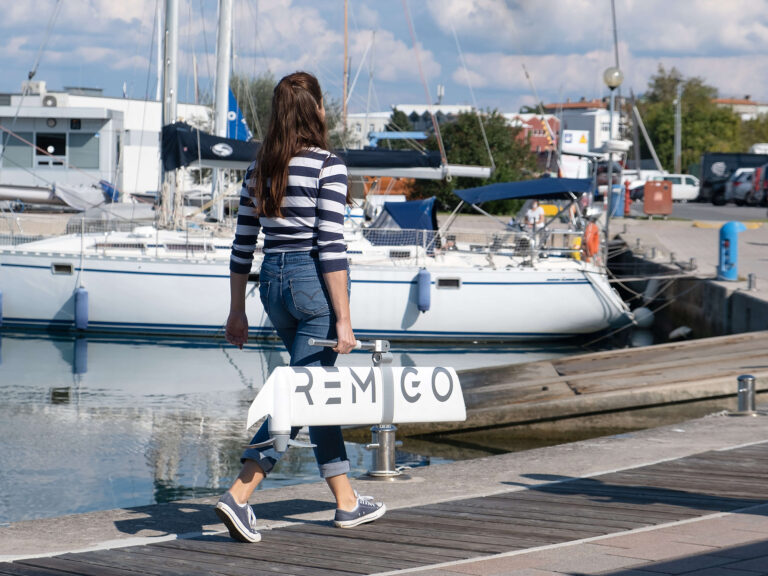Flutter, flutter, flap. “Oh no, not again,” I cursed as Curlews jib sheet fouled on the navigation light lashed high up on the shrouds. The current swept the little boat sideways at three knots toward the blossoming brown edges of the coral reef. “Sheets caught…” but Pauline was already there, anticipating an all too common hitch — part of the tacking routine we needed to change.
The long, narrow pass into Wallis Islands lagoon was giving us even more of a workout than wed bargained for. Locals gathering sea urchins on the uncovering reef watched Curlew grind slowly up the channel. It was like playing a game of “Chutes And Ladders,” slithering backward almost as often as climbing forward.
“All this clutter and junk will have to go,” I said, shaking my head as soon as we were safely reaching across the placid lagoon toward the village. Suddenly the waist-high pin rails, head-high light boards, masthead radar reflector and “shippy” baggywrinkle liberally lashed about the rigging seemed to be acting like square sails set aback trying to cripple the old gaffers spirit.
“Ah,” you tell me, “none of that on modern Bermudian boats.” Well, what about the mast steps, radar and radar reflector, aerials, masthead instruments, roller furling jibs, spray hoods and dodgers? Few, if any of these help you go forward and all are a factor when the boat drags her anchors in the middle of a gusty black night. The old tables and rules of thumb for anchor size have little relevance in these days of higher freeboards and increased windage.
So, soon after Curlew was anchored in the quiet lagoon, the streamlining began, and to this day, moored in South Georgia with a foot of snow on the deck, we must keep a constant vigil.
The traditional light boards were the first to go — how proud wed been when Id made and installed them a few years before, and Pauline had lovingly kept their varnished surfaces glossy. Now we realized they were just heavy slabs of windage that interrupted the airflow and grabbed our sheets. It was a far greater pleasure to remove them, and Curlew must have given a hearty sigh of relief.
We slid the pin rails down the shrouds and relocated them as low as possible — I shortened each overly long pin — and screwed the navigation lamp brackets onto the outer edge which was canted to give the correct angle.
Later, when Curlew became flush decked — a very radical way to streamline — the belaying pin rails were scrapped for fixed fife rails. Again I secured them as low as possible; I thru-bolted the legs with 1/2-inch 316-grade stainless steel threaded rod right down into each deck beam capturing the iron hanging knees that back up the chain plates.
In the “good old days” shrouds were made of gnarly old plough steel or galvanized 7×7 — wormed, parceled and served with tarred marline and coated with great, glutinous globs of linseed oil or similarly heinous home brew. They became as thick as a longshoremans hairy, tattooed forearm and, if it hadnt been for the baggywrinkle, the mainsail would probably have stuck permanently to the shrouds when it jibed.
Curlews smooth 1×19 stainless steel rigging really has no need for anti-chafe systems except at the spreader ends, for which self-amalgamating tape makes a neat finish. I do check it regularly though for signs of corrosion due to oxygen starvation. Naturally the soggy baggywrinkle there previously would have been much more harmful. We once worked on a Bermudian ketch whose five-year-old rigging was failing underneath each ratline lashing. The 316-grade stainless steel rigging is said to be much less prone to this corrosion so weve always specified it.
One last and no doubt controversial clean sweep made in Wallis was to remove the courtesy and Q flag halyards and their blocks lashed to the spreaders which always threatened to puncture the topsail. Apologies to the custodians of etiquette, but Curlew can fly the appropriate courtesy flag hoisted from the spinnaker halyard to spreader height. Her ensign is seldom flown unless requested by the authorities because it all seems rather overtly nationalistic. Shouldnt it be preferable to judge people by themselves and their boat rather than by their antecedents, unconventional as that might sound?
But back to sailing. It soon became much more of a pleasure to sail our little cutter — without the clutter — perceptibly faster, handier and safer, too.
Curlews mast fittings have been refined over the years. I went so far as to whittle and taper the top section, removing the topping lift sheaves and cheeks, traditional hounds and heavy throat halyard bolster block. Tangs for the lower shrouds and blocks for the topping lifts are hung from the bolt that supports the mast collar. Curlews thin, smooth, tapered, solid stainless steel rod spreaders are also flexibly hinged from this collar.
The masthead fitting and the bowsprit cranse iron were likewise made smaller and lighter. The chain bobstay was changed for wire and its lower fitting is countersunk with just a lug protruding from the stem. This is positioned above the water so that, in light airs at least, there is a very clean entry.
Below the waterline all three thru-hull fittings are now countersunk and a Hypalon (inflatable boat material) flap laid over the largest, a two-inch cockpit drain, to cut down turbulence. Bulky straps for the rudders gudgeon and pintles and their hex-headed bolts now are countersunk as flush as possible with minimal gap between rudder and sternpost.
By this time Curlew was in New Zealand, and racing had evolved from a pleasant pastime to an absorbing obsession. It was so refreshing to see the care owners took to spray paint, polish and buff the hulls of their simple and efficient boats. Well, that might have been counterproductive for our old bird, but at least racing was showing up the value of the past work. The boom gallows became removable and halyards slimmed to thinner dimensions using exotics — Kevlar and Spectra mix. Curlew seldom races inshore with topping lifts or reefing pendants made up and we use reefing lacing in preference to dangling, line-fed earings that only disturb aerodynamic flow.
The topsail yard is hollow and tapered, and the sails luff is permanently in a groove instead of being laced — another attempt at a clean entry. The whole unit stows on deck when not in use, dramatically reducing windage, effectively shortening the mast by 10 feet when the wind pipes up or when were at anchor.
It was not until returning to Atlantic waters and arriving in the Caribbean to participate in Antigua Race Week that the chickens really came home to roost and Curlews sleeker aspects gave her four firsts and a fourth to win a class brimming with fin keelers and otherwise devoid of gaffers. She won second Best Performance Overall, outshined only by a souped-up, flat-out, Admirals Cup Two-Tonner.
“Yes,” I hear you protest, “this should not be an article about racing — cruising is the name of the game.” I include racing just to point out how a chunky, clunky old gaffer, given her head and a bit of help in the streamlining department, can confound all skeptics and slice her way to windward in the fast lane.
Individually, all the refinements sound insignificant, even eccentric, but added together they make a whole lot of difference.
Of course, you could just use the engine, but what happens when it doesnt work? Her racing speed, windward ability and her “wriggleability” have gotten Curlew out of trouble, into tight anchorages and safely home for the night, which more than justifies the advantages of streamlining from which any cruising boat can benefit.
————————————————————————
Since 1968 Tim and Pauline Carr have cruised, raced and rebuilt their Falmouth Quay punt, a gaff-rigged cutter approaching the century mark.

